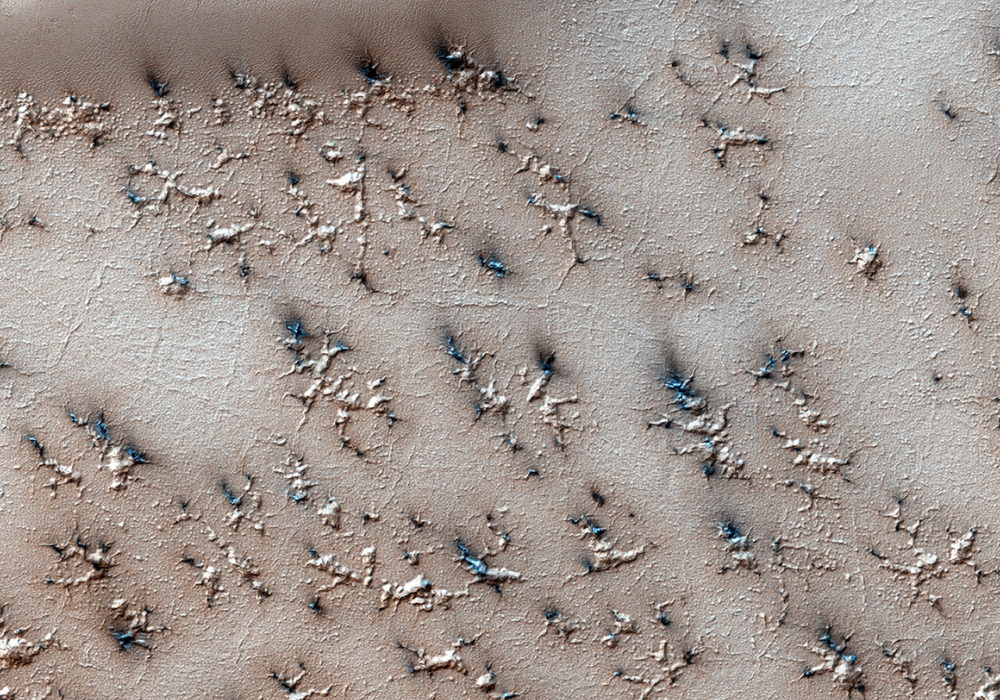A layer of dry ice covers the South Polar layered deposits every winter. In the spring, gas created from heating of the dry ice escapes through ruptures in the overlying seasonal ice, entraining material from the ground below. The gas erodes channels in the surface, shown in this image , generally exploiting weaker material.
The ground likely started as polygonal patterned ground (common in water-ice-rich surfaces), and then escaping gas widened the channels. Fans of dark material are bits of the surface carried onto the top of the seasonal ice layer and deposited in a direction determined by local winds.
This target was suggested by the citizen scientists at Planetfour : Terrains .
Written by: Candy Hansen (audio: Tre Gibbs) (24 January 2017)
More info and image formats at http://hirise.lpl.arizona.edu/ESP_046845_0975
Image: NASA/JPL/University of Arizona
